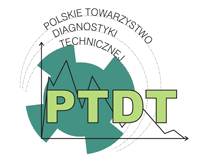Features of the fastest pressure growth point during compression stroke
1
Odessa National Maritime University
Submission date: 2018-01-16
Final revision date: 2018-03-12
Acceptance date: 2018-04-04
Online publication date: 2018-04-09
Publication date: 2018-06-11
Corresponding author
Oleksiy Yeryganov
Odessa National Maritime University, Office 219, Mechnikov street, 34, 65029 Odessa, Ukraine
Odessa National Maritime University, Office 219, Mechnikov street, 34, 65029 Odessa, Ukraine
Diagnostyka 2018;19(2):71-76
KEYWORDS
point of fastest pressure growthtop dead centrepolytropic compressionpressure derivative by crank angle
TOPICS
ABSTRACT
The article contains description of method, which enables to synchronize indicator diagram of diesel engine using the parameters of fastest pressure growth point during compression stroke. It means calculation of this point position relatively to top dead center (TDC). At first, experimentally obtained data has to be smoothed by the Butterworth low pass filter. Afterwards, assumed that the process is stationary, compression stroke is expressed by equation of polytropic compression. Then the first and the second pressure derivatives are determined by crank angle. The condition, when the second pressure derivative by crank angle equals zero, enables us to find the position of the fastest pressure growth point relatively to TDC. The angle, which was found in such a way, is used later as first approximation for finding the TDC position with adequate accuracy. It’s also shown how to calculate the volume of compression chamber (compression ratio) using parameters of this point. Results of the calculation are compared with experimentally obtained data.
REFERENCES (16)
1.
Brown WL. Methods for evaluating requirements and errors in cylinder pressure measurement. SAE Paper N°670008. https://doi.org/10.4271/670008.
2.
Brunt M., Emtage A. Evaluation of IMEP Routines and Analysis Errors SAE Paper N°960609. https://doi.org/10.4271/960609.
4.
Ding Y, Stapersma D, Knoll H, Grimmelius HT. Characterising heat release in a diesel engine: A comparison between Seiliger process and Vibe model. In Proceedings of the 28th CIMAC World Congress, Bergen, Norway, 2011.
5.
Ding Y, Stapersma D, Grimmelius HT. Cylinder process simulation with heat release analysis in diesel engine. Conference: Power and Energy Engineering Conference, 2009. APPEEC 2009. Asia-Pacific. https://doi.org/10.1109/APPEEC....
6.
Ding Y, Stapersma D, Grimmelius HT. Using parametrized finite combustion stage models to characterize combustion in diesel engines. Energy & Fuels, 2013: 7099-7106.
7.
Hribernik A. Statistical determination of correlation between pressure and crankshaft angle during indication of combustion engines. SAE Paper N°982541. https://doi.org/10.4271/982541.
8.
Lapuerta M, Armas O, Bermúdez V. Sensitivity of diesel engine thermodynamic cycle calculation to measurement errors and estimated parameters. Applied Thermal Engineering, 2000; 20(9): 843-861.
9.
Motohiro T, Shigeji T. Performance and combustion analysis of high-speed diesel engine in fast ferry under normal service condition. CIMAC Congress Kyoto. 2004; 43: 1-8.
11.
Pinchon P. Thermodynamic calibration of top dead center in piston engines. Oil & Gas Science and Technology - Rev. IFP, 2006; 39(1): 93-111. https://doi.org/10.2516/ogst:1....
12.
Smith SW. The scientist and engineer’s guide to digital signal processing. – Second Edition. – San-Diego: California Technical Publishing, 1999.
13.
Staś M. An universally applicable thermodynamic method for T.D.C. determination. SAE Technical Paper 2000-01-0561, 2000. https://doi.org/10.4271/2000-0....
14.
Stapersma D. Diesel engines, Volume 1: Performance analysis. Royal Netherlands Naval College, 2002.
15.
Tazerout M, Le Corre O, Rousseau S. TDC determination in IC engines based on the thermodynamic analysis of the temperature-entropy diagram. SAE Technical Paper 1999-01-1489, 1999. https://doi.org/10.4271/1999-0....
16.
Varbanets R, Karianskiy A. Analyse of marine diesel engine performance. Journal of Polish CIMAC. Energetic Aspects. Gdansk: Faculty of Ocean Engineering and Ship Technology Gdansk University of Technology. 2012; 7(1): 269-275.
We process personal data collected when visiting the website. The function of obtaining information about users and their behavior is carried out by voluntarily entered information in forms and saving cookies in end devices. Data, including cookies, are used to provide services, improve the user experience and to analyze the traffic in accordance with the Privacy policy. Data are also collected and processed by Google Analytics tool (more).
You can change cookies settings in your browser. Restricted use of cookies in the browser configuration may affect some functionalities of the website.
You can change cookies settings in your browser. Restricted use of cookies in the browser configuration may affect some functionalities of the website.


